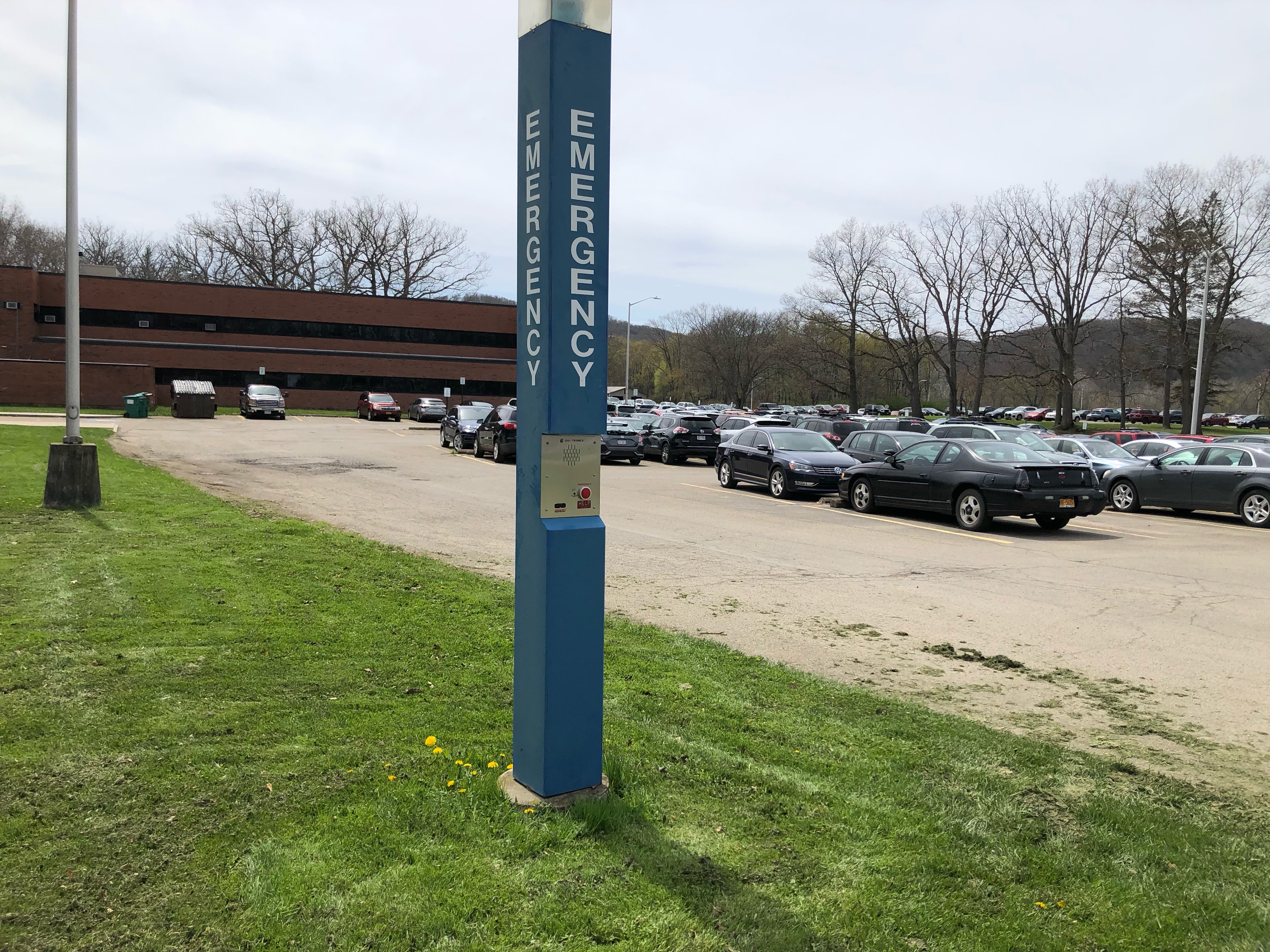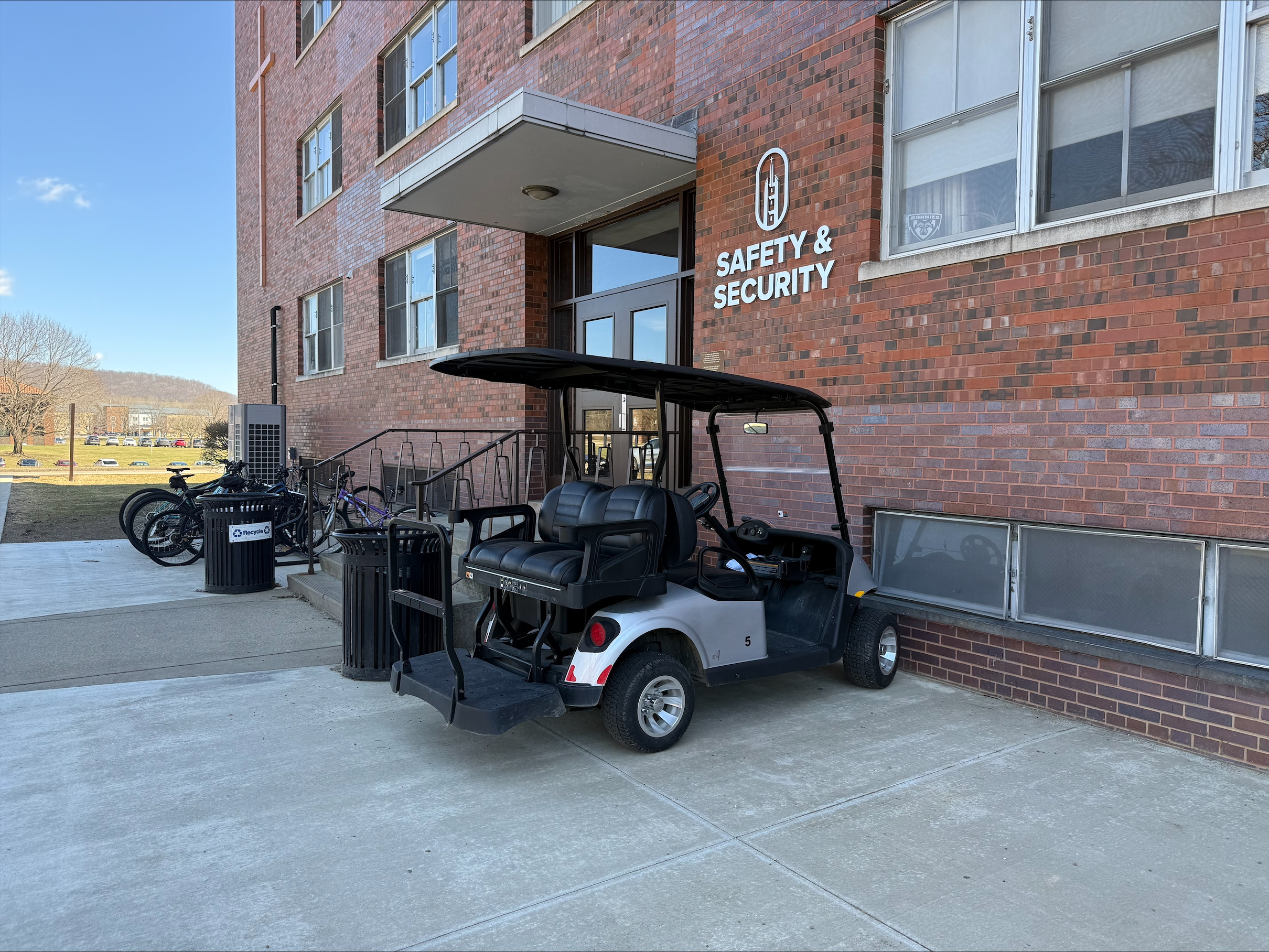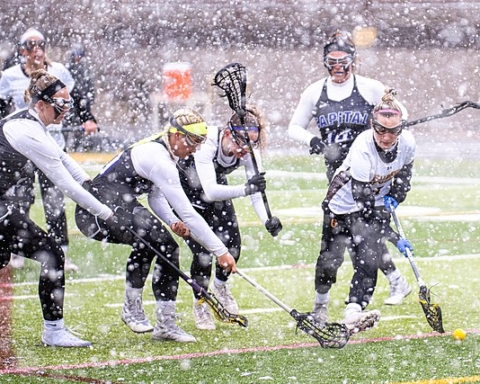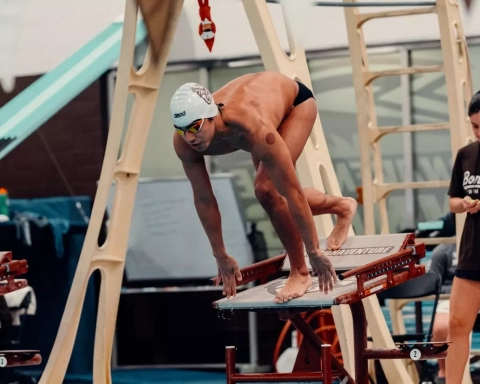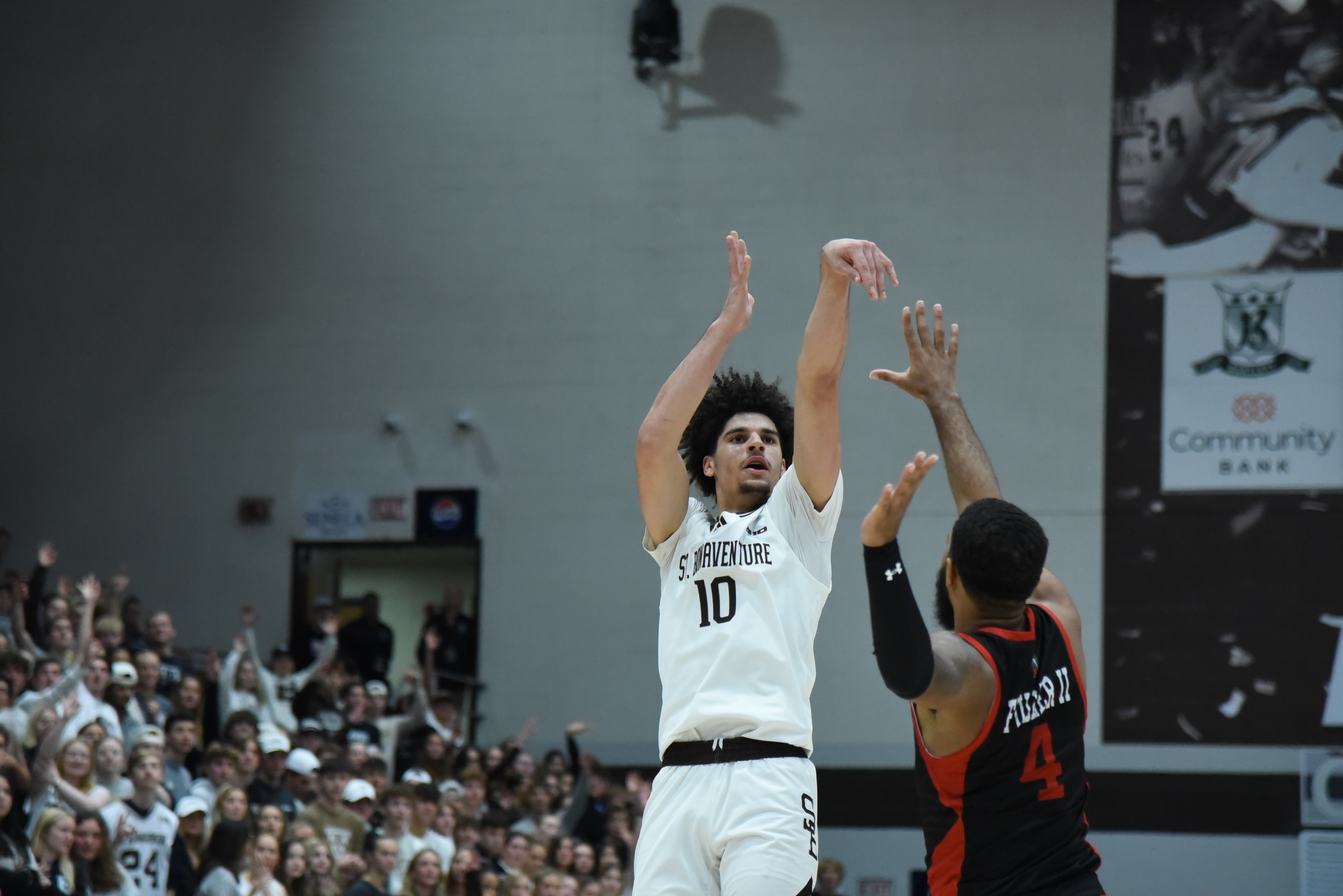BY JONNY WALKER, STAFF WRITER
The sharp night air weighed down on her as she trudged out of the campus fitness center.
Hadley Thompson’s shorts had been enough to keep her warm, but the sun now hid behind the hills beyond St. Bonaventure University’s campus. With one foot out the door, she stuffed her hands into her jacket’s pockets.
She paused. With her left hand, Thompson dialed her roommate’s number and pressed her cell phone against her ear. Her right hand remained in its pocket, clutching a small, aluminum canister.
“I wish there were more blue lights — more on central campus,” said Thompson, a sophomore journalism major. “Maybe then I wouldn’t have to walk with pepper spray in my pocket and someone on the phone.”
The most recent data published by the U.S. Department of Justice shows 92% of college campuses nationwide have a system of blue light emergency phones, designed to connect students with campus security at the press of a button. There are 23 emergency communication devices, including the luminescent pillars called “blue lights,” across Bonaventure’s campus.
Gary Segrue, who oversees campus safety at Bonaventure, said students know where blue light phones are and how to use them. Students voiced varying levels of familiarity with the blue light phones, confidence in their ability to use them and belief in their effectiveness.
“[The blue light phones] are simple and easy to use,” said Segrue. “Students are advised when they attend freshmen or transfer orientation on their existence and how to use them.”
Many students said they did not receive such advisement.
“I am not confident in my ability to use one, especially in an emergency situation,” said Faith Pingie, a sophomore education major. “I don’t know how to use them and was never taught how to [use them]. I do not know where they are on campus.”
Gracie Lafay, a sophomore educational studies major, said she knows of two blue-light-phone locations on campus.
“They’re in such inconvenient spots that I always seem to forget about them,” said Lafay. “I would have to go across campus to even be able to access one.”
Lafay said the nearest blue light phone to her residence hall is up to a five-minute walk away.
Thompson, Pingie, Lafay and other female students said they felt unsafe walking across parts of campus alone, especially at night. All agreed the blue light phones, calling them too few and too far between, have not improved their senses of safety while on campus. But they said installing additional blue light phones could help them feel safer.
“If the blue lights were in more areas of campus, I believe they’d make a better impact,” said Lafay.
Segrue said his department does not plan to install additional units.
“In my opinion, these communication devices are old security technology,” said Segrue. “They were developed before cell phones. I do not want to invest new funds in old technology.”
Some students said the apparent physical wear on the blue light phones discouraged them from considering the blue lights as a potential option in an emergency.
“They look decommissioned,” said Jacob Palmer, student government’s vice president. “If I were in need, I would not be confident in their ability to help me.”
There is no student-government committee aimed primarily at addressing student safety. However, Palmer said student concerns regarding blue light phones could indirectly fall under the discretion of a handful of committees.
“Being a pretty tall, solid guy, I’m not really concerned for my safety,” said Palmer. “But if students don’t feel safe on campus, we encourage them to talk to their student leaders. We want everyone to feel safe.”
Male students in particular said they did not struggle with their senses of safety while on campus. They said they did not consider familiarizing themselves with the blue light phones necessary.
“I have never felt unsafe on campus,” said Matthew Salewski, a sophomore international studies major. “But if I were in a dangerous situation, I would not at all consider the blue lights. Primarily because I don’t know where they are, but also because at that point I would just call security or 911 on my phone.”
Segrue joined Bonaventure’s administration in 2015. He said he has yet to see a blue light phone used for its intended purpose.
“The phones have been sporadically used — mainly by students locked out of their residence halls or local food delivery services,” said Segrue. “We keep a log for emergency calls or criminal reports. Since my arrival at Bonaventure … the phones have never been used to report an emergency or anything remotely criminal in nature.”
Walkerjc20@bonaventure.edu

